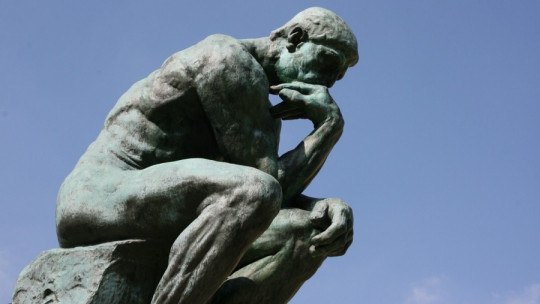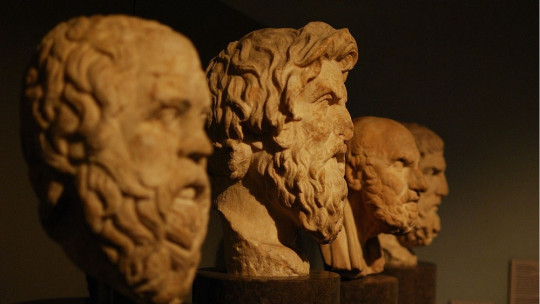In 1971 it appeared A Theory of Justice, which is considered the main work of the American philosopher John Rawls (1921-2002). In it, the thinker answered the questions that he had already raised in his 1957 article Justice as fairness (Justice as equity), where it was proposed to overcome the utilitarian doctrine predominant in the West and, especially, in the Anglo-Saxon world.
It is in the theoretical context of Rawls’s concept of justice that we must insert his theory of the “veil of ignorance” which, as we will see, is not an original idea of his, since other previous philosophers, such as Immanuel Kant (1724-1804) and David Hume (1711-1776) already delved into it in the 18th century. John Rawls picks up this theory and brings it closer to his field.
In this article we will briefly explain what John Rawls’ famous “veil of ignorance” consists of and how we can frame it in his theory of justice, so important to the political process of today’s world.
What is John Rawls’ Veil of Ignorance?
We can define this idea as the situation of ignorance in which the different members of what Hawls calls the “original position” must find themselves, that is, the state in which the parties will choose a series of principles on which justice should be based This lack of knowledge means not knowing what the ultimate goals of each individual who makes up this “original position” will be, which will make them decide these principles with the greatest impartiality possible.
But, definitions aside, to deeply understand this idea we must go back a little to Hawls’ conception of justice. Otherwise, it will be impossible for us to understand what the philosopher means when he talks about concepts such as the “veil of ignorance” or the “original position.” Let’s see it.
Justice and the social contract
John Rawls never hid in his works that he directly took the ideas of the Enlightenment philosophers (such as the aforementioned Kant and Hume) to design his own conception of justice and the social contract. In the preface to his work A Theory of Justice Rawls states that what he intends is to take the 18th century concept of social contract to a “higher state of abstraction.”
But what is the social contract? Both Kant and Rousseau, two of the main champions of this concept, started from the basis that The primordial stage of the human being was a “natural state” , where no explicit law existed. The human being could subsist without laws because he was, in the opinion of these philosophers, “good by nature,” and was governed exclusively by natural laws.
According to Jean-Jacques Rousseau (1712-1778), this “natural” state of non-possession (and, therefore, non-conflict) was lost at the moment when civil society appeared and, with it, abuse and the submission of certain people and elites. From then on, a “social contract” becomes absolutely necessary, that is, an agreement between individuals, to be able to coexist peacefully and in harmony.
The main difference between Rousseau’s social contract and Rawls’s is that, while the first presumes that the contract is necessary to “access” society, the second considers that this contract must be made previously, that is, before the configuration of said society. Only in this way, according to Rawls, can it be guaranteed that the parties that have decision-making capacity function based on the principles of equality and freedom.
For this to happen, Rawls argues for the need for an “original position”, that is, an original situation that is based on equity and where the members agree, unanimously, about the principles that should govern justice. . In other words; Rawls’ theory emphasizes that the aforementioned social contract can only be fair and truly equitable if it is established in a phase prior to the appearance of inequalities Only in this way can real impartiality of the parties be guaranteed.
The “original position”
Thus, John Rawls describes this “original position” as a previous stage necessary to configure the principles that will govern social justice. It is a cooperation that focuses on a single goal: the common good. Societies, says Rawls, have reached a considerable degree of disorder, which inevitably entails terrible inequality among their members. The origin of this chaos is, according to the philosopher’s theories, the nonexistence of this “original position” when establishing the bases of justice. Thus, Rawls proposes returning to this initial position to start from 0 and truly build a just and equitable society.
The main criticisms that this theory has received are, of course, those that consider it something utopian and unrealizable. Rawls is aware of this when he describes the “original position” as hypothetical and non-historical. Hypothetical, because it is not certain what the parties have agreed, but rather what they could agree on. And not historical, because it is obviously a situation that has never occurred and (Rawls adds) probably never will.
We deduce from these statements that Rawls was very aware of the impossibility of his theory, which makes him move through an absolutely ideal and abstract terrain.
The veil of ignorance and Rawls’s theory of justice
Once all this is established, we are in a position to explain what Rawls’s “veil of ignorance” is and what it consists of. It was strictly necessary to briefly summarize his theory of justice (and, above all, his concept of “original position”) in order to properly understand it.
Authors such as Kant and Hume had already proposed this concept as a condition sine qua non to establish the social contract. If the members of society are not somewhat ignorant of their future conditions, they will inevitably fall into self-interest when making agreements Ignorance prior to the contract is therefore necessary, so that it is as impartial as possible and is oriented towards the common good.
The level of ignorance varies according to the authors. Kant advocated that the information given to the parties to the agreement be fair and necessary, and Rawls follows this path in his theory. According to the American philosopher, the “tighter” the veil, the greater impartiality the decisions made by the parties will have. In other words; If the parties are unaware of their place in society, as well as other issues that Rawls describes as their fate and distribution of natural talents, their decisions will not be based on personal interests, which is precisely what has led human beings to live in a society. utilitarian society, where the only thing that prevails is individual benefit.
In this way, Rawls’s theory of justice contrasts with the so-called “principle of utility”, where personal interests actually prevail. It is not that the philosopher completely renounces individual benefit, but that he proposes a new balance between the liberal tradition of the West (founded on individualism) and the community tradition. Only in this way, according to him, can a truly just and fair society be built.









